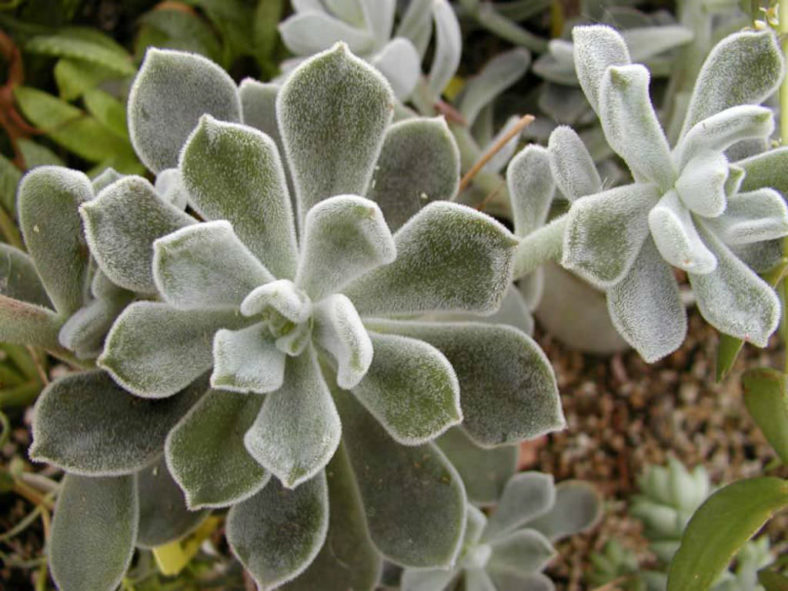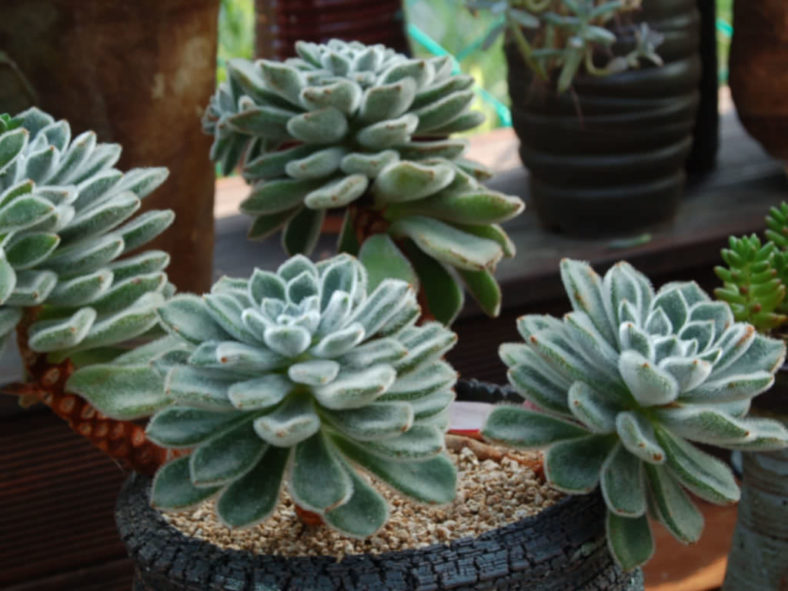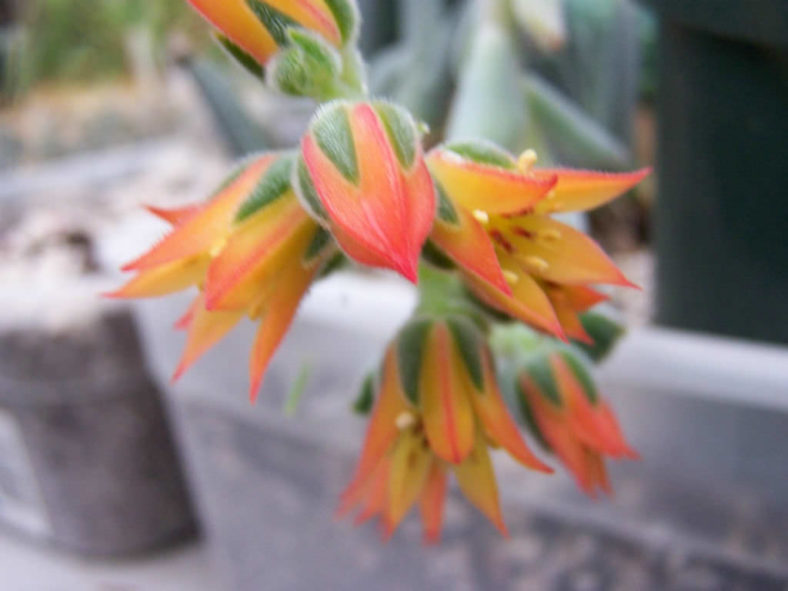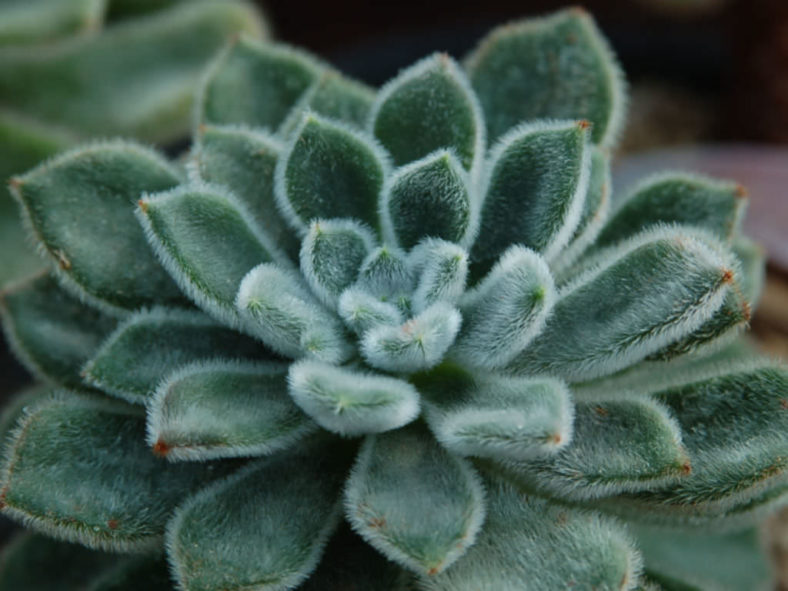Scientific Name
Echeveria pulvinata var. frigida Kimnach
Common Name(s)
White Chenille Plant
Synonym(s)
Echeveria frigida, Echeveria pulvinata var. nova, Echeveria pulvinata 'Frosty', Echeveria pulvinata 'Suave'
Scientific Classification
Family: Crassulaceae
Subfamily: Sempervivoideae
Tribe: Sedeae
Genus: Echeveria
Origin
Echeveria pulvinata var. frigida is native to Mexico, probably only at the type locality between San Pedro Yólox and Rio Grande in Oaxaca. It was distributed as Echeveria pulvinata 'Frosty' in 1983 (ISI 1390).
Description
Echeveria pulvinata var. frigida, also known as Echeveria pulvinata 'Frosty', is a lovely small, shrubby succulent with thick stems tipped with rosettes of green spoon-shaped leaves densely covered with white hairs. The stems are also covered with white hairs. They can grow up to 6 inches (15 cm) long, sometimes more, and up to 0.5 inches (1.2 cm) in diameter.
The bell-shaped flowers can reach up to 0.5 inches (1.3 cm) in length and 0.4 inches (1 cm) in diameter. They are pale yellow at the base, becoming orange distally, with a magenta stripe along the keel. The flowers appear in inflorescences, with 17 to 19 flowers in spring and sometime later. The inflorescences can grow up to 4 inches (10 cm) long.

Hardiness
USDA hardiness zone 9b to 11b: from 25 °F (−3.9 °C) to 50 °F (+10 °C).
How to Grow and Care
Most common Echeveria species are not complicated succulents to grow, provided you follow a few basic rules. First, never let water sit in the rosette, as it can cause rot or fungal diseases that will kill the plant. Additionally, remove dead leaves from the bottom of the plant as it grows. These dead leaves provide a haven for pests, and Echeverias are susceptible to mealy bugs. Finally, as with all succulents, careful watering habits and plenty of light will help ensure success.
Most Echeveria can be easily propagated from leaf cuttings, although a few are better from seeds or stem cuttings. To propagate a leaf cutting, place the individual leaf in a succulent or cacti mix and cover the dish until the new plant sprouts.
Repot as needed, preferably during the warm season. To repot a succulent, ensure the soil is dry before repotting, then gently remove the pot. Knock away the old soil from the roots, removing any rotted or dead roots. Treat any cuts with a fungicide.
See more at How to Grow and Care for Echeveria.
Links
- Back to genus Echeveria
- Succupedia: Browse succulents by Scientific Name, Common Name, Genus, Family, USDA Hardiness Zone, Origin, or cacti by Genus
Photo Gallery
Click on a photo to see a larger version.



